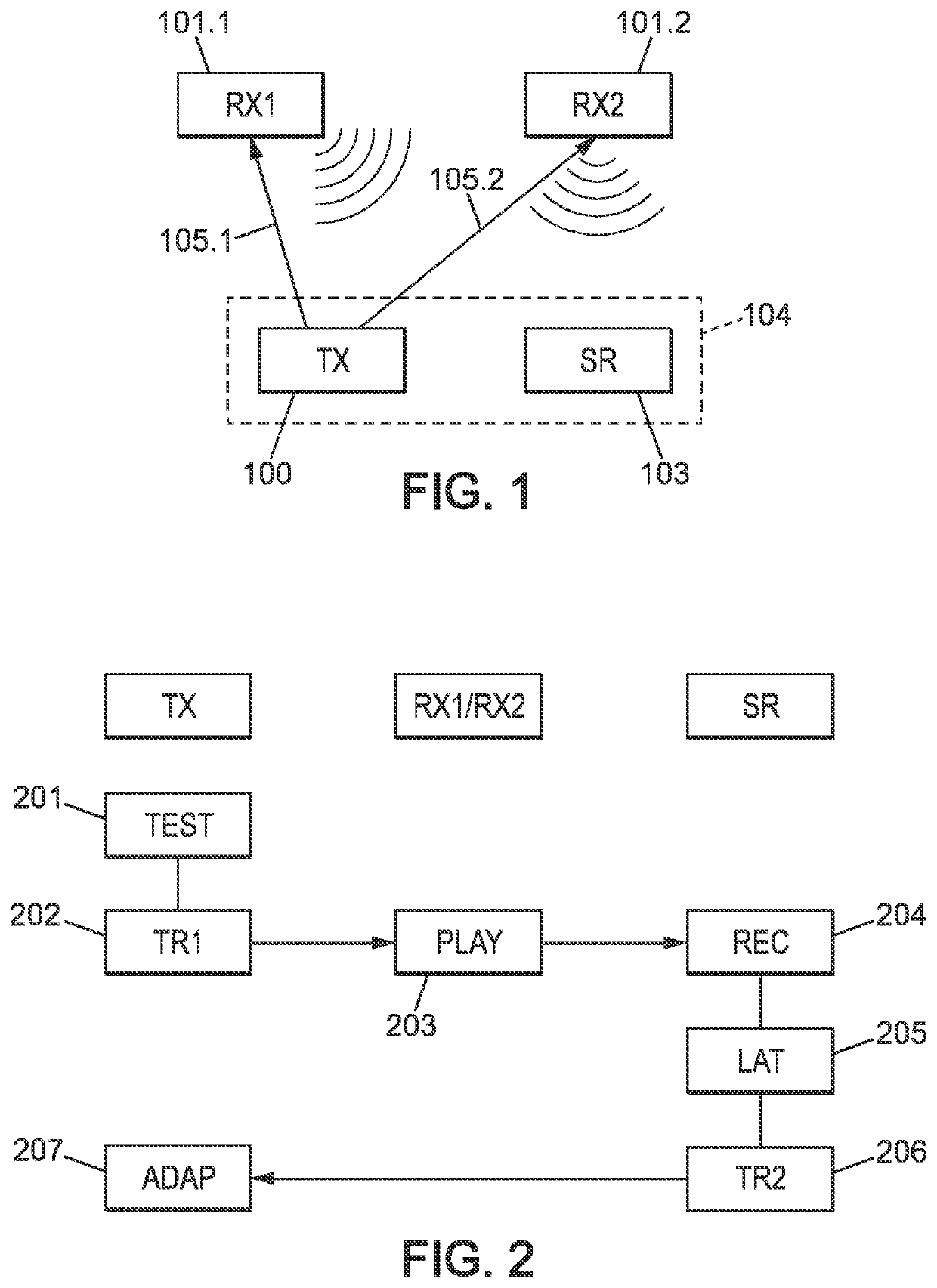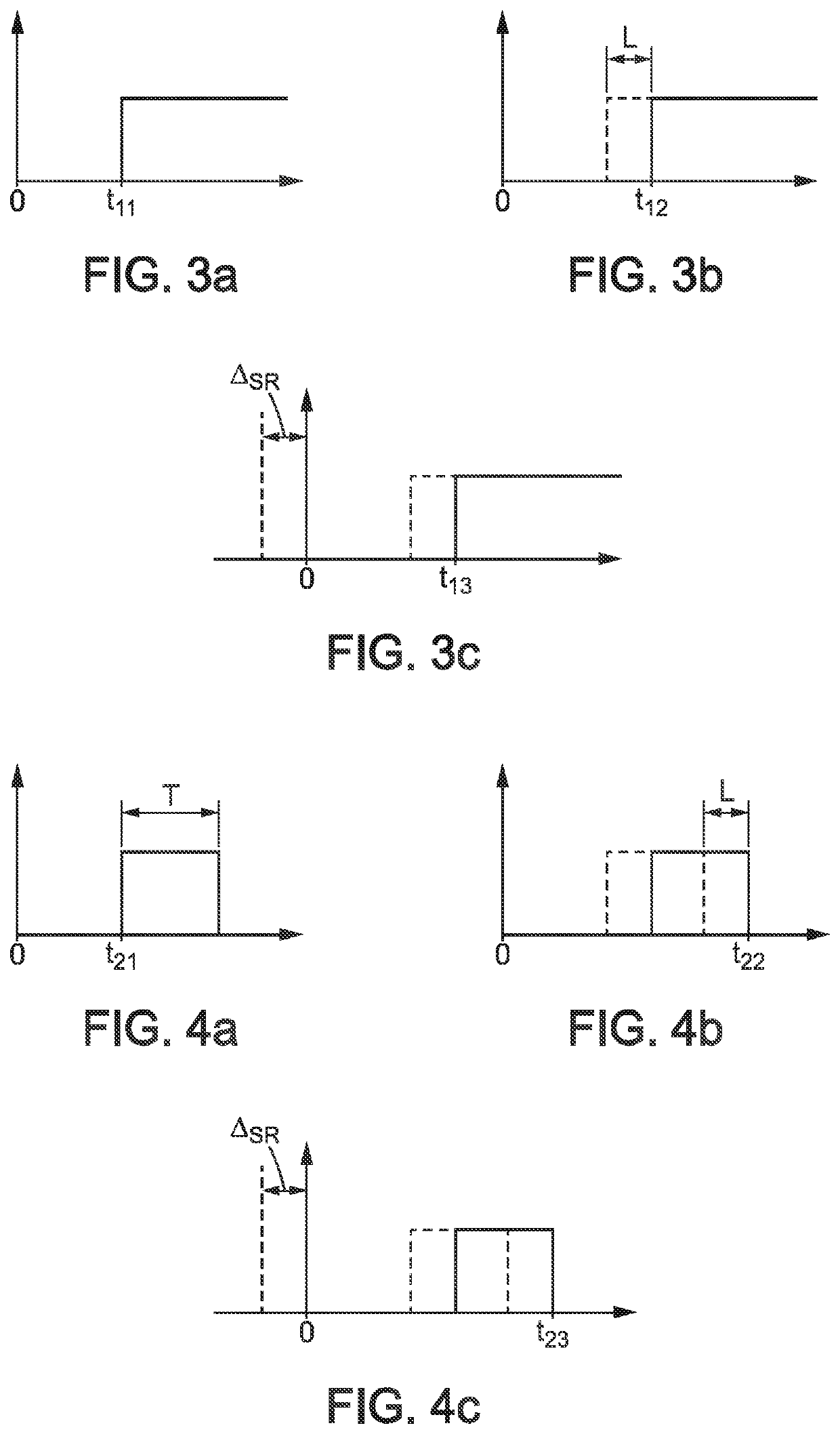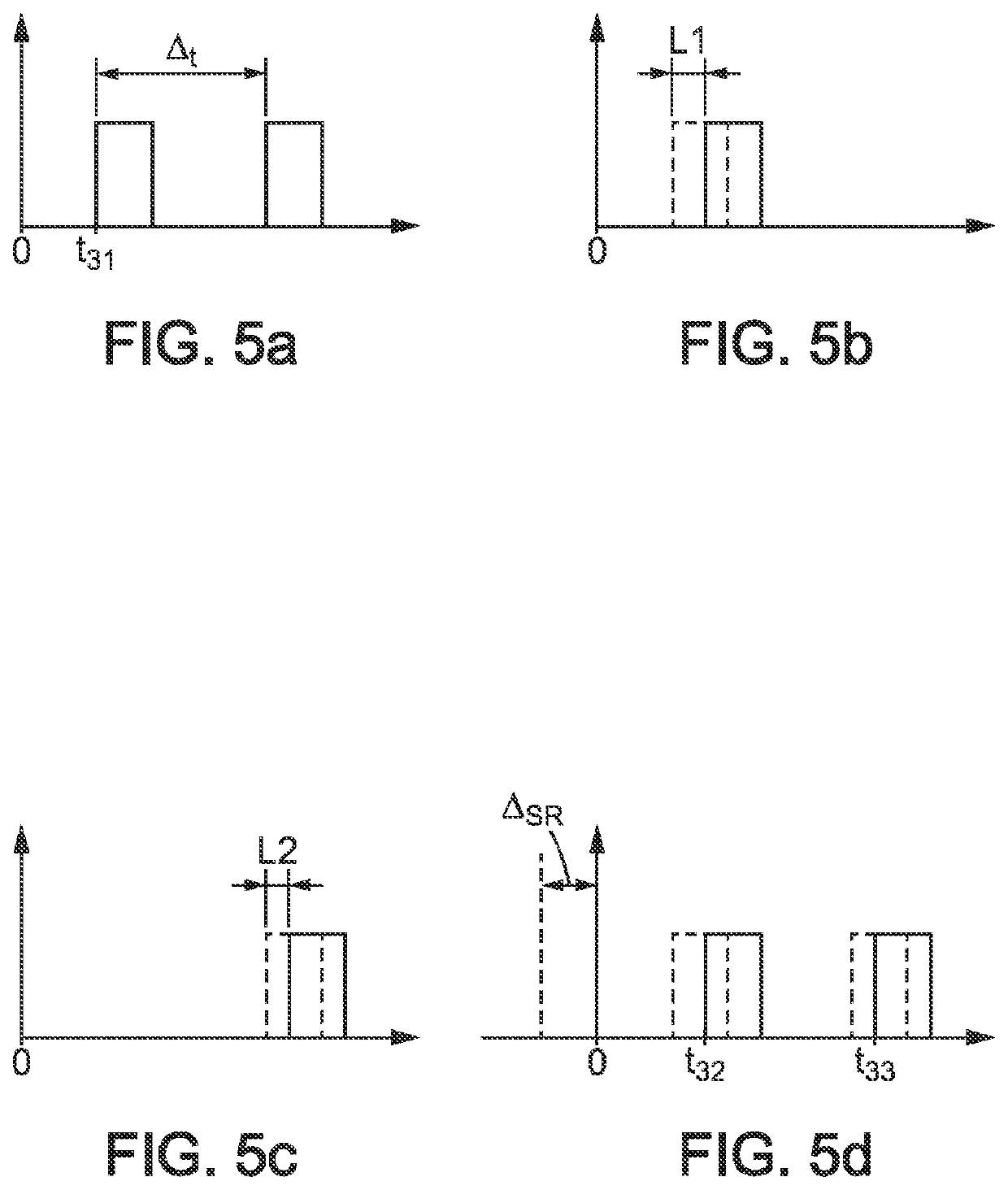Obtention of latency information in a wireless audio system
a wireless audio and information technology, applied in the direction of transducer details, digital transmission, data switching network, etc., can solve the problems of inability to synchronize speakers, limited range of bluetooth devices, and multimedia content other than audio
- Summary
- Abstract
- Description
- Claims
- Application Information
AI Technical Summary
Benefits of technology
Problems solved by technology
Method used
Image
Examples
first embodiment
[0104]FIGS. 3a to 3c and 4a to 4c illustrate audio signals emitted and captured by entities of the wireless audio system, according to the invention.
[0105]According to the first embodiment of the invention, the internal latency of the sound recorder 103 is known so that the first internal latency (being an example of latency information) of the first receiver 101.1 can be completely determined based on the time reference of the test signal, based on the first audio record and based on the known internal latency of the sound recorder 103.
[0106]According to a first implementation of the first embodiment, illustrated in FIGS. 3a to 3c, detection of a rising edge of the first audio record is used to estimate the first internal latency of the first receiver.
[0107]To this end, the wireless transmitter 100 transmits (at step 202, as explained above) a test signal being a square signal comprising at least a rising edge. The instant of the rising edge is considered as the time reference of t...
second embodiment
[0120]According to the invention, the internal latency of the sound recorder 103 is not known so that the latency information is a difference of internal latencies between the first receiver 101.1 and the second receiver 101.2, the difference being determined by using two receivers as explained hereafter. Simultaneously, the second internal latency of the second receiver 101.2 can be determined.
[0121]The second embodiment is illustrated with reference to FIGS. 5a to 5d.
[0122]According to the second embodiment, at step 201, the wireless transmitter 100 generates a first test signal and a second test signal. Both test signals can be the same signals (for example a square signal having a rising edge and a falling edge and a given duration). However, the test signals may also be different. At step 202, the first test signal is transmitted to the first receiver 101.1, then, after a given time gap Δt, (which is considered as the time reference of the test signals), the second test signal...
PUM
 Login to view more
Login to view more Abstract
Description
Claims
Application Information
 Login to view more
Login to view more - R&D Engineer
- R&D Manager
- IP Professional
- Industry Leading Data Capabilities
- Powerful AI technology
- Patent DNA Extraction
Browse by: Latest US Patents, China's latest patents, Technical Efficacy Thesaurus, Application Domain, Technology Topic.
© 2024 PatSnap. All rights reserved.Legal|Privacy policy|Modern Slavery Act Transparency Statement|Sitemap



